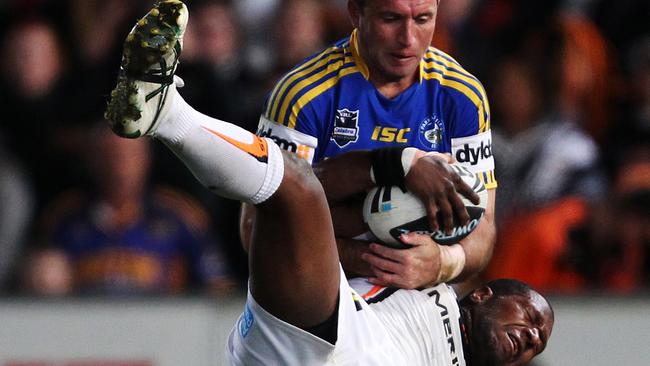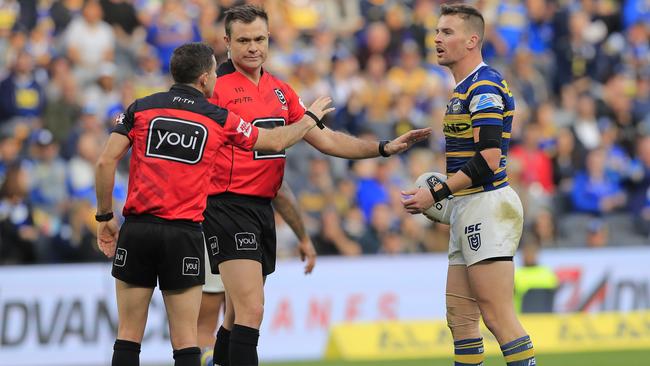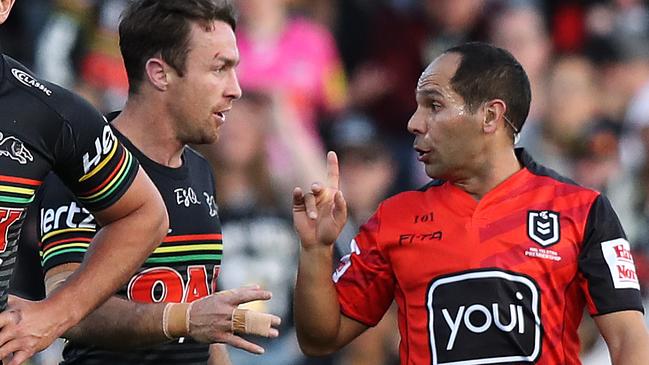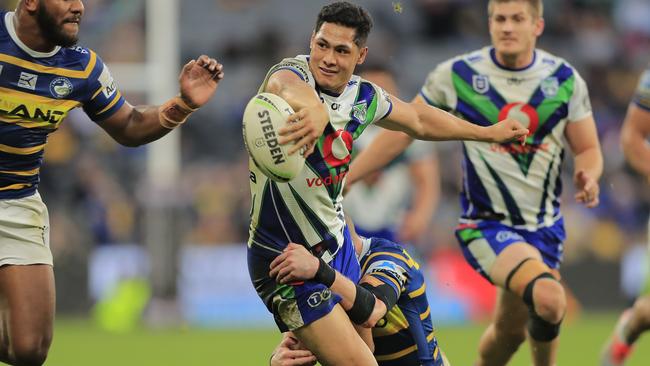The NRL must abandon the new one-on-one strip rule as soon as possible
Things should be made easier for rugby league’s under-pressure referees, not harder. The new stripping rule only does the latter, writes MIKE COLMAN.
Sport
Don't miss out on the headlines from Sport. Followed categories will be added to My News.
EARLY MAIL: Who’s in for Round 20?
FORWARD: Refs feel the axe for dud call
Who would be a referee? Especially when the NRL continues to hang them out to dry.
Over the years the rugby league lawmakers have systematically removed all contests from the game.
Players can no longer strike for the ball or kick it forward in the play-the-ball, and the scrums are such a non-event that the hooker doesn’t even pack into the front row anymore.
Once upon a time halfbacks were penalised for putting the ball into the second row. Now any scrum-feeder not putting it into the second row is likely to get dropped.
There is still one area in which players can contest the ball though – the one-on-one strip.
Live stream the 2019 NRL Telstra Premiership on KAYO SPORTS. Every game of every round live & anytime on your TV or favourite device. Get your 14 day free trial.

This is not an old rule that has slipped through the cracks by the way. It is a new one introduced to … well, I’m not really sure why it was introduced. I can only assume that it seemed like a good idea at the time.
Well, it’s not now.
As coaches are wont to do, they have found a way around it. Players have been taught that when two or three players are wrestling the ball carrier, one goes for the ball and when he has a strong grip on it the others jump back and raise their arms as the strip is completed.
There was a perfect example in the Warriors-Eels game when Adam Blair released his grip a split second before Chanel Harris-Tavita executed a perfect one-on-one strip.
Except that the referees didn’t see it that way. Harris-Tavita was penalised – incorrectly as replays showed and all four officials from the match were dropped for next week’s round.

There was one the refs got wrong in the Panthers-Raiders game too – the other way around - with Nathan Cleary credited with a one-on-one strip that replays proved should never have been allowed.
I point out these instances not to criticise the refs but to support them.
Surely their job is hard enough without the NRL making it more difficult.
It is all very well to be wise after the event with the benefit of endless slow motion replays from every conceivable angle but why should referees be asked to judge in real time on whether the second player’s fingernail was still touching the ball carrier’s jersey at the time of the strip?
It’s not as if they haven’t got other things on their plate.
Like dangerous tackles and forward passes for instance.
And coaches like Ivan Cleary approaching them at halftime to “clarify something which probably happens every week.”

Now I’m not saying that referees should be a protected species. When they get something wrong they should cop the flak like everyone else in the game, but at the same time the NRL should make things as easy for them as they can.
The one-on-one strip rule should go. Either make it open slather or can it altogether.
The forward pass rule needs to be clearer as well. Two games were decided on the weekend by contentious pass decisions which could well have gone the other way.
You could look at Roger Tuivasa-Sheck’s pass to Gerard Beale 100 times and still not know for sure whether it was forward under the NRL laws that state: ‘The direction of a pass is relative to the player making it and not to the actual path relative to the ground.
“`A player running towards his opponents’ goal line may throw the ball towards a colleague who is behind him but because of the thrower’s own momentum the ball travels forward relative to the ground. This is not a forward pass as the thrower has not passed the ball forward in relation to himself.’
Given that Tuivasa-Sheck propelled the ball using a backhanded flick it’s hard to see how he could have passed it forward “in relation to himself”.

By the same token it would take a broad interpretation of any law to accept that Braidon Burns’ pass to Campbell Graham for the Rabbitohs’ matchwinner against the hapless Dragons was anything but forward.
Technology and slow-mo replays now highlight the referees’ errors in such cases. The NRL should employ the same technology to ensure they don’t happen in the first place.
Originally published as The NRL must abandon the new one-on-one strip rule as soon as possible


